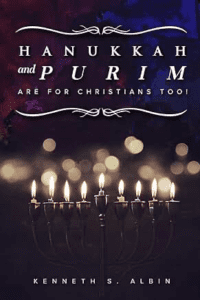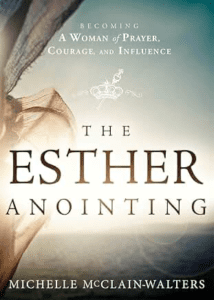
An Intro to Purim for Christians
The traditionally Jewish celebration of Purim commemorates God’s deliverance of the Jewish people as recounted in the historical book of Esther in the Bible’s Old Testament. It’s an exciting story but more than that, it has an important message for Christians. It tells of God’s faithfulness and His love for His people and of His plan for their deliverance through the courage and faith of a young woman.
The Story of Esther
The celebration of Purim doesn’t mean much if you’re not familiar with the story of Esther, found in the book of Esther. The themes of this holiday tie very directly into this exciting story with queens and kings, an evil villain, and an unexpected hero. The paraphrased story follows but don’t neglect to read the real version! There’s no substitute for the Word of God!

The Bash of the Century
The story begins with a party. A big one. It was thrown by King Ahashverosh. That’s his Persian name but he’s called King Xerxes or Artaxerxes depending on which Bible translation you read. For 6 months, King Ahashverosh of the Medes and Persians, who ruled 127 provinces total, partied with his army and the leaders of surrounding provinces. The afterparty was a smaller party, but this time with more drinking. And this one lasted 7 days!
It was during this afterparty that a very inebriated King Ahashverosh called for his queen, Vashti, to “display her beauty” at the party. He also asked her to wear her crown, which some interpret to mean that he wanted her to appear wearing only her crown!
Queen Vashti refused, which greatly angered her husband. It also raised the eyebrows of the men close to him. They convened, deciding that Vashti’s punishment must be severe lest other wives follow suit, disobeying their husbands as well.
Vashti Replaced
Queen Vashti was dethroned and prohibited from being in the presence of the king. It wasn’t long before King Ahashverosh decided to replace her. It’s here that we meet Esther, winner of a 127 province-wide beauty pageant, thrown by the king. He chose and married Esther after seeing her magnificent beauty.
Orphaned at a young age, Esther was being raised by her uncle, a Jewish man named Mordecai. He’d advised her to keep Jewish heritage a secret from her new royal acquaintances, so they didn’t know she was Jewish and she carried on with her new royal life, Mordecai looking on during his daily walks in front of the harem courts.
Mordecai Saves the King
In his usual position at the king’s gate, Mordecai overheard a plot between two guards to assassinate King Ahashverosh and reported them through Queen Esther. The guards’ plan was discovered, and they were hanged for their crime. Hailed as a hero, Mordecai’s actions won him a place in the king’s Book of Chronicles, a historical account of the kingdom.
Enter the Villain
King Ahashverosh chose Haman of Amalekite decent, as his second in command. Historically, the Amalekites hated the Jewish people. Descendants of Esau (and subsequently Amalek), these are the same people who went out of their way to attack the Hebrew people in the desert after their Exodus from Egypt.
Because of his position, all were to bow before Haman when in his presence. Mordecai, knowing Haman’s background, refused to bow before him which drew intense animosity toward Mordecai. Haman not only wanted to kill Mordecai but also the Jewish people as a whole.
Haman’s Plot
Haman convinced King Ahashverosh that it was in his best interest to get rid of the Jewish people. At the time of this conversation, neither man knew the true identity of their queen. The king granted Haman the authority to extinguish the Jewish people and the decree was sent out to all provinces.
The Jewish community grieved deeply upon hearing the news and word of the decision eventually reached Queen Esther. She sought out Mordecai and he encouraged her to approach the king and plead for her people. Knowing her appearance before the king without being summoned may be a death sentence for her, she told him to have all Jews fast and pray for 3 days, along with Esther and her maidens. Then she courageously said that she’d go before the king, even though it was against the law and, quote, “if I perish, I perish”.
Esther’s Invitation
When Esther appeared before King Ahashverosh, he not only spared her life, he said she could have whatever she wanted – even up to half the kingdom! We can conclude he likes her a whole lot! She then invited the king and Haman to a banquet. When they attended, King Ahashverosh again asked her what she requested, offering her up to half the kingdom and she invited them to a second banquet.
That evening, when Mordecai again had refused to bow before Haman, the villain went home and vented his frustration with Mordecai to his wife. Haman’s wife suggested he have gallows constructed and hang Mordecai on it before the banquet the following evening.
The King Remembers Mordecai
That night, the king had a bout of insomnia and ordered that the Book of Chronicles be read to him. Miraculously, the part about Mordecai thwarting the assassination plan against King Ahashverosh was read. The king asked his servants what had been done to reward Mordecai for his allegiance and they replied that nothing had been done.
King Ahashverosh had Haman brought in and asked him his opinion of what should be done for a man the king wants to honor. Not-so-humbly thinking it was himself, Haman suggested the honored man should be paraded around the kingdom, riding the king’s horse and wearing royal robes and a crown.
Just imagine the horrified look on Haman’s face when King Ahashverosh told him it was actually Mordecai he intended to honor in this way. It was Haman himself that had to lead the horse around with Mordecai on it!
Esther Accuses Haman
Then the time arrived for Esther’s second banquet. It was at this event that the tables turned. Esther revealed two pivotable bits of information that changed history. The first was that she was Jewish. The second was Haman’s plan to extinguish her people.
The king was angry at Haman and hanged him on the very gallows Haman had intended to hang Mordecai on. King Ahashverosh then promoted Mordecai to the position once held by Haman and learned of the relationship between Mordecai and Esther.
At the request of Queen Esther, King Ahashverosh allowed Esther and Mordecai to write letters in his name that revoked the previous decree for the destruction of the Jews. It said that they could defend themselves and even avenge themselves against their enemies. Haman’s 10 sons were hung and many of those who had intended to destroy the Jews were killed as well.
Purim Established
There was great joy among the Jewish people because the king’s decree had been lifted. They feasted and celebrated, and Mordecai established Purim as the day that the Jewish people would forever commemorate their preservation in the face of destruction.
The End. And God’s people lived happily ever after. Well, we will eventually. But that’s another story.
While it makes for a very entertaining story, how does the book of Esther apply to us as Christians? Does God have a message in this story and in the celebration centered upon it?
Themes of Purim
On Purim, we celebrate the sovereignty of God’s plan over man’s. Just like when Joseph told his brothers “You meant it for evil, but God meant it for good” (Gen. 50:20), God took this seemingly tragic situation and turned it into a victory for His people.
We also see that it was as Israel united that they were able to overcome their enemies. If Esther had accepted the king’s offer of half the kingdom (it would be tempting, no?) instead of courageously pleading for her people, it appears that they would have been destroyed!
Faith and Courage
Like Esther, we should have the faith and courage to do the work God has for us. If we’re listening closely in His Word, in prayer, and among His people, the Holy Spirit will make what God has for us to do on Earth clear to each of us. He has uniquely gifted each of us for the job he has for us. What a blessing that He allows us to participate in His plans!
One thing that makes the book of Esther unique from others in the Bible is that it doesn’t mention the name of God at all. Not once. It shows that God was glorified through the actions of His people. When we step out in faith, God works through us to show His power and glory to a watching world!
God’s Faithfulness
God’s faithfulness to and deliverance of His people is clearly shown in the story of Esther. He not only preserved the Jewish people through Esther, but He was with them before this story and has been with them ever since. Despite great persecution throughout history, the Jewish people don’t just merely exist but are thriving!
As Christians, we’re grafted in to the promises God gave to His people in the Old Testament through Jesus, our Messiah, and we’re God’s people as well! He has been, is now, and will forever be faithful to us, just as He was to the Jews in the book of Esther. We know this because it’s shown in His word, in our own lives, and in the lives of those around us!
How Christians Celebrate Purim
Christians can celebrate Purim in much the same way the Jewish people have for thousands of years. While not one of the Biblical Feasts, Purim holds great significance for Christians also. The only difference is that we can also celebrate the deliverance from sin God has provided in Jesus as our savior. God’s always faithful, even when we’re not! Below are a few ways Purim can be celebrated in a Christian home and here’s a calendar of future Purim dates.
- Read the book of Esther
This relatively short, yet fun to read book in the Old Testament will bring to light the reasons for celebration on Purim. Many make this fun by booing or shaking an unpleasant-sounding instrument called a “gragger” whenever Haman’s name is read in the story or by cheering for Esther and Mordecai. These things also help keep children entertained throughout the story.
- Make hamantaschen
This is not only the traditional dessert served on Purim, it’s a great gift to give on that day as well (see below). It’s a lot like a cookie or small pastry with fruit filling inside. Its three-cornered shape is supposed to represent Haman’s hat or even his ears! Tori Avey’s hamantaschen recipe is not only delicious, it also includes folding instructions and hints for success that other recipes don’t.
- Give gifts
Giving gifts was one of the ways Mordecai from the story of Esther recommended we celebrate. These are often edible gifts, with hamantaschen topping the list of possibilities.
- Give to charity
Another of Mordecai’s suggestions, a gift to charity is a great idea any day but on Purim, it shows we’re grateful for the faithfulness of our God!
- Celebrate with a meal
It’s not what you serve at this meal that’s Purim-specific. It just needs to be a joyful meal! This is not the time to be health-conscious or anything. Make something everyone loves and plenty of it – with hamantaschen for dessert!
- Act it out
A favorite of both children and adults, this is also a great way to learn the story! Kids are suckers for any dress-up game and this one is no exception. You’ll need a Queen Esther, an evil Haman, a King Ahashverosh, a Mordecai, and maybe even a Queen Vashti!
- Fast on Purim Eve
Also called the Fast of Esther, many fast the day before Purim in remembrance of Queen Esther asking her people to fast and pray for three days before she appeared before the king. This is a great time to both praise God for what He’s done as well as petition for His people. And don’t worry! You can make up for those lost calories with hamantaschen the next day! *wink*
- Greet with Happy Purim!
While you could also say “Happy Purim”, you could kick it up a notch with “Chag Purim Sameach” (pronounced khog pur-im suh-may-ach). That means “happy Purim festival”. It’s literally festival Purim happy, but you get the idea!
- Praise God!
This is another thing you could do any day of the year but on Purim, we praise Him specifically for His faithfulness, deliverance, and His never-ending love for His people.
If you’d like to learn more about how Esther’s story relates to the Gospel or to yourself, as a woman in this century, below are two books for further study.
Enjoy your Purim celebration and give all the glory to God! Chag Purim Sameach!
Comments (3)
Leave a Reply Cancel reply
Search
Recent Comments
- Patricia Boone on How to Find a Hebraic Congregation
- Holy Branches on The Hebrew Calendar Explained
- lachumba on The Hebrew Calendar Explained
- Richard Close on Is the Sabbath Really THAT Important to God?
- Yah Behna Behna Yisrael (Govt name) WARREN PARKS on How to Find a Hebraic Congregation









The story of Esther is very well known among the Christian circles that I move in. The phrase where Mordecai tells Esther “Who knows if you came into the kingdom for such a time as this” is a well used scripture.
I am very interested in your page here. I have read some of these comments and agree wholeheartedly with some of them. I would love to learn more about the Hebrew language and am actually taking a class right now that will be going over some of the seasons, times and feasts as we learn. I am excited. It starts next week.
That sounds like a great class, Angela. What an exciting spiritual journey you’re on! Shalom!